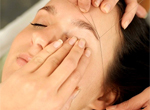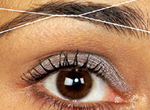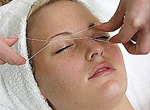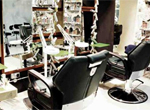Getting Rid of Acne
Here’s yet another condition that seems to be a license to print money for skincare companies. I once spent 4 weeks indoors in the height of summer as my acne was so bad so I feel really depressed at the time and money I wasted trying out all the magic solutions. However I eventually worked out what needed to be done, and so far everyone I have advised has seen a big difference.
First of all, you need to split your cure into two phases. First you need to heal up your skin, second you need to prevent further spots. If you try to do both at once it just won’t last.
So first, you need to dry up your skin as much as possible to stop the P acne bacteria feeding off your skin oil (gross!) Also, you need to heal up any broken skin as these keep getting reinfected. Now I always used to think that strong remedies such as 10% benzoyl peroxide were best because more = better. However I realised that you have to be incredibly gently with skin, even if you feel like taking a wire brush to it sometimes! Skin heals rapidly, and if you keep treating it harshly then it’ll start creating scar tissue and pockmarks.
So I stopped using moisturiser, kept skin wipes with me to wipe away any grease throughout the day and started using mineral foundation instead of greasy cosmetics. This is where I accidentally found out how good mineral foundation is for acne. Because it’s pure pigment it simply sits on the skin and does not clog the pores. Also, it absorbs grease too so there’s a double bonus. You just put it on with a blusher brush and maybe touch up once or twice a day if you have REALLY bad marks. You need to get a good quality one, not the so-called mineral makeup sold in the shops. The best (and for once the cheapest) I ever found is from www.mineralpuremakeup.com One pot lasts for 3 months and has great coverage.
I also used a low% salicylic acid gel at night to prevent any pores clogging up. The best one I found was the P8N8 sensitive skin serum along with the facial wash and toner, but they may be too pricey for some. So I’d say just buy something that has 2% salicylic acid and NO MOISTURISER to use at night.
So after a few weeks my skin had healed up nicely, but there were still some yucky spots that didn’t go away. These were pores that were infected internally, so they needed to have the infected stuff taken out. It’s important to learn how to pop zits properly, otherwise you leave behind the infected stuff and it creates another zits. First you need to clean your hands. Next just pop it as you normally would to get rid of the pus. Now here comes the important part; you need to get out the hard ‘plug’ of infected stuff that is creating more and more spots. So pinch the skin together a little bit and squeeze the BASE of the spot. It takes a little time but eventually you’ll get the hang of it. You’ll know if you did it correctly if you don’t get a spot the next day in the same place.
So after almost a year of this regime my skin had cleared up considerable, but I still had very dry skin as I was still not using a moisturiser. I slowly stopped using the skin wipes and started cutting down on the P8N8 serum. I just used a basic cleanser and slowly began using a little shea butter in the dryer patches. I sometimes get a few zits now and again (usually when I have eaten Poptarts for some reason) but the really bad acne has gone and the skin marks are all but faded.
I did try prescription remedies but since none of them address the problem (the bacteria and the clogged pores) they don’t cure the problem.
Read the full article...



